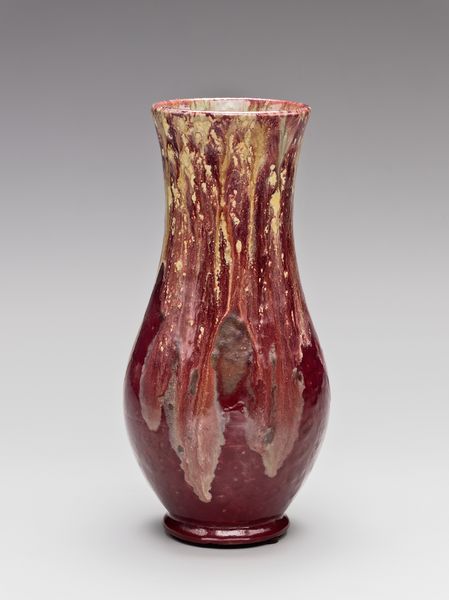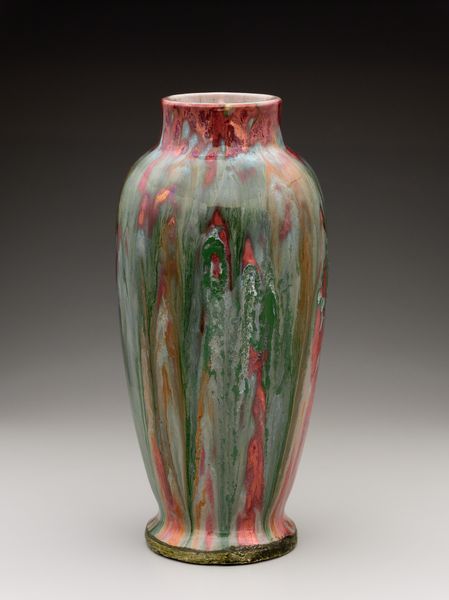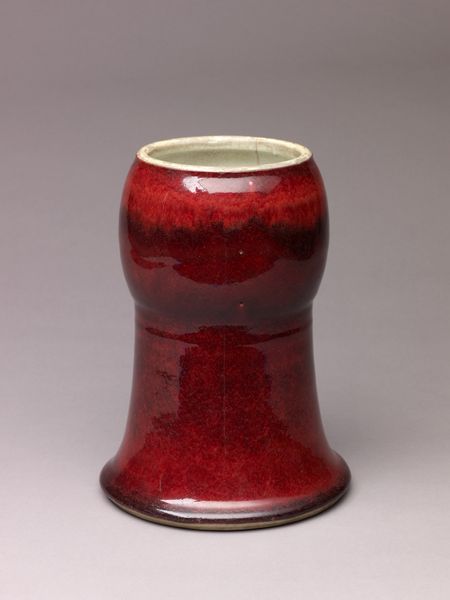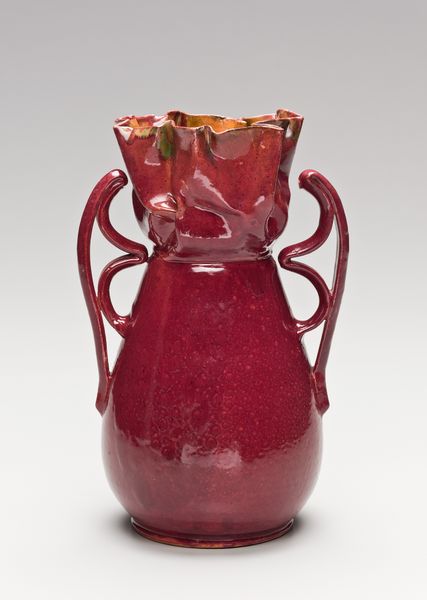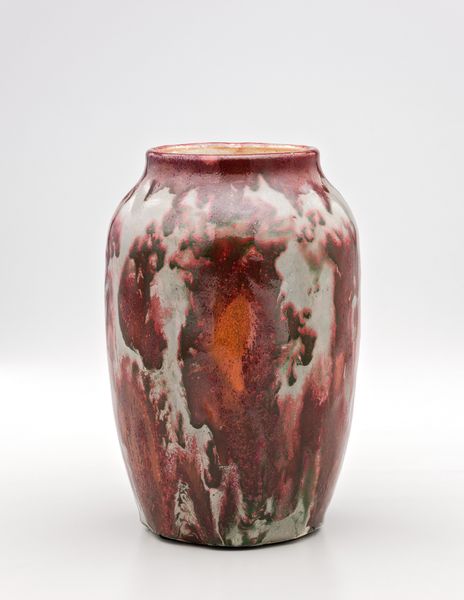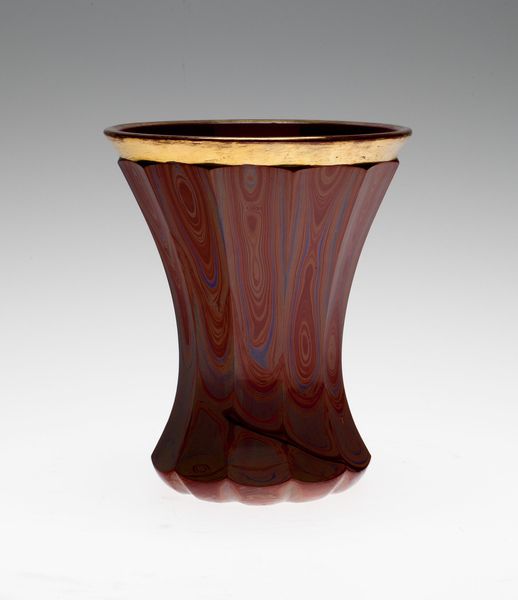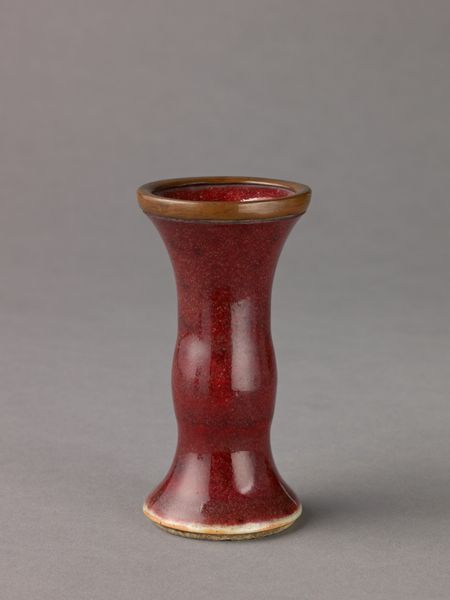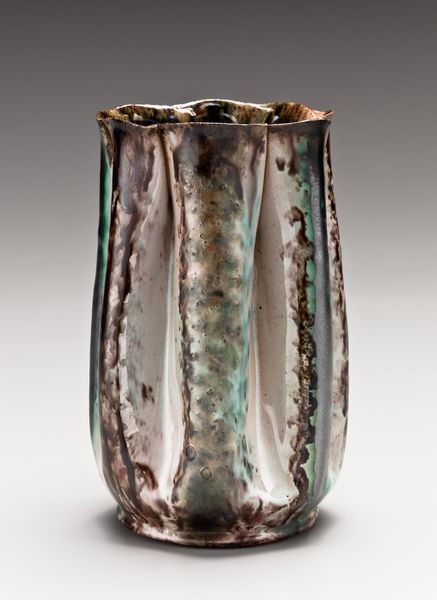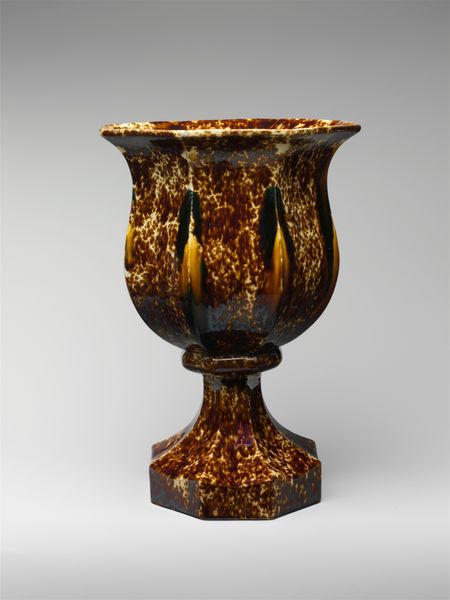
ceramic, porcelain, earthenware, sculpture
#
art-nouveau
#
ceramic
#
porcelain
#
earthenware
#
sculpture
#
decorative-art
Dimensions: Overall (confirmed): 15 3/8 × 7 3/4 × 7 3/4 in., 12.9 lb. (39 × 19.7 × 19.7 cm, 5.9 kg)
Copyright: Public Domain
Curator: Welcome to gallery 728, home to decorative arts from around the world. Today, we'll be looking at "Square Vase" by Ernest Chaplet. It's estimated to have been made between 1884 and 1894. Editor: It's quite striking, isn't it? A robust form with that strong burgundy glaze flowing like lava over the earthy base. Curator: Chaplet was a fascinating figure, pushing the boundaries of ceramic art during the Art Nouveau period. We can appreciate that this vase is currently on display at the Metropolitan Museum of Art, here in New York City. It represents a fascinating intersection between fine art and artisanal production that developed towards the end of the nineteenth century. Editor: The way he uses the glaze—it's clearly intentional, but there’s an element of chance involved, right? It embraces the materiality of the porcelain and earthenware, that's so fascinating about these types of experiments. Curator: Absolutely, his work reflects a wider shift towards valuing unique, handcrafted objects, challenging the dominance of mass-produced goods. It's like a little revolution in the decorative arts! And the "Square Vase" showcases that transition beautifully. Editor: These works really speak to an effort to bridge what can be artificial hierarchies of creative production, elevating techniques from utilitarian applications to something beyond conventional function. I am particularly drawn to the contrast between the white rectangular form atop the primary vessel. Curator: That specific formal language in vase design was becoming quite popular and almost served as an emblem for modernity by the late 19th century. The way the decorative arts developed shows the political power and influence of the industry, especially because items like these became so sought after by elite collectors, thus affirming their socio-economic standing in society. Editor: Looking at its form, considering both process and materiality, you get the sense that its presence goes far beyond simple ornamentation. It evokes history while simultaneously expressing ideas central to a key historical moment, the development and proliferation of consumer culture in a newly modern era. Curator: It truly encapsulates the innovative spirit of its time, a testament to how ceramic could carry the weight of history, all while presenting something exciting to audiences interested in decorative art! Editor: A testament to craft as a cultural statement.
Comments
No comments
Be the first to comment and join the conversation on the ultimate creative platform.
